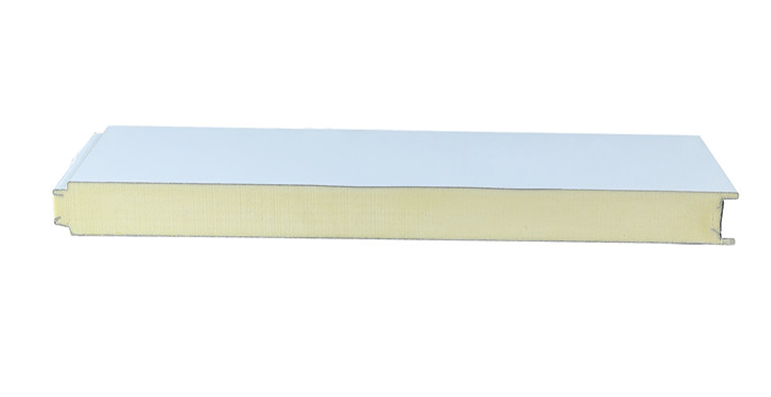Cold storage panel price

From food processing and pharmaceutical manufacturing to flower preservation and chemical storage, cold storage panel is increasingly used in a wide range of applications both at work and in life. The heart of any efficient cold room or cold freezer is the cold storage panel system. So, what determines cold storage panel price? What factors affect the price of cold storage panel?
The main factors affecting cold storage panel price: skin materials and core materials of cold storage panel and the thickness of cold storage panel.
Core material of cold storage panel
The core materials used for cold storage panel are mainly Polyurethane foam, Expanded Polystyrene (EPS) and Rockwool.
- Polyurethane foam (PU/PIR): The most common and generally the highest-performing option. PIR (polyisocyanurate) is a premium variant of polyurethane (PU), offering excellent thermal insulation (low lambda values, e.g., 0.021-0.023 W/mK) and slightly better fire resistance. PIR/PU cores offer excellent structural strength. Price: Due to material cost and performance, PIR/PU cold storage panel is the most expensive.Thickness and density (kg/m³) further determine cost and thermal insulation value (R-value).
- Expanded Polystyrene (EPS): A more economical choice. While it offers decent thermal insulation (λ value approximately 0.033-0.038 W/mK), its thermal insulation performance is lower than that of PIR/PU of the same thickness. It also has lower structural strength and a lower fire rating. EPS cold storage panel is generally the least expensive option, suitable for budget-constrained, less demanding, or higher-temperature applications (such as cold rooms above 0°C) where fire regulations allow. In Germany, the use of EPS cold storage panel is restricted to buildings under 22 meters or high-value buildings.
- Rockwool: Widely chosen primarily for its excellent fire resistance (non-combustible). Its thermal insulation performance (λ :0.035-0.040 W/mK) is generally lower than that of PIR/PU, typically requiring thicker panels to achieve the same R-value. Rockwool is also heavier. Price Impact: The price of rockwool cold storage panel is generally between EPS and PIR/PU cold storage panel. Cost depends on the fire protection compliance requirements of a specific application. Rockwool cold storage panel is often used in cold storage environments with higher fire protection requirements.
Thickness of cold storage panel
The thickness of the cold storage panel directly determines the R-value of the cold storage panel. This is arguably the single most important factor besides the core material. Thicker panels provide exponentially better insulation (higher R-value), which is essential for maintaining consistently low temperatures (especially in freezers) and reducing long-term energy costs.
Cold storage panel thickness typically ranges from 50 mm for mild cold rooms to 200 mm or even thicker for ultra-low temperature freezers, with temperatures of -30°C and below.
It was well known that as the thickness of the cold storage panel increased, the price of the cold storage panel would also increase. 100mm thick PIR cold room panel can cost significantly more (often 50% to 100% more) than 50mm cold room panel of the same type and size. Choosing the right thickness for the required temperature is crucial to maximize efficiency and avoid future problems.
Skin material of cold storage panel
The skin material of the cold storage panel is a part of the cold storage panel. It protects the core material of the cold storage panel and provides durability, hygiene and aesthetics.
- Pre-coated galvanized steel (PPGI): PPGI cold room panel is economical, durable, and corrosion-resistant. They are the standard choice for many cold rooms.
- Stainless steel (304, 316): Stainless steel cold room panel is primarily used in high-sanitation environments (pharmaceutical and food processing) and offer excellent corrosion resistance (especially 316 in harsh conditions). However, stainless steel cold room panel is significantly more expensive than PPGI cold storage panel.
- Food-grade plastics (HDPE, FRP): These panels are used in specific high-sanitation or corrosive environments. Prices vary by type.
Thickness and coating of cold storage pane skin
Thickness and coating of cold storage panel skin also affect the price of cold storage panel. Typical cold storage panel skin thickness ranges from 0.5mm to 0.8mm; the thicker the skin, the higher the cost. Special coatings designed to enhance hygiene (antibacterial properties) or corrosion resistance can also increase the cost of cold storage panel. For example, PPGI coatings include PE, PVDF, and SMD, with varying degrees of corrosion resistance.
The above factors will affect cold storage panel price. For cold rooms, this is only part of it, but it is related to the temperature control function and durability of the cold storage. For cold storage construction plans, you can consult SDpanel’s senior designers.
